The Purple Book Symbolism Sensuality in Contemporary Art Illustration Pdf
An online library of artists' publishing.
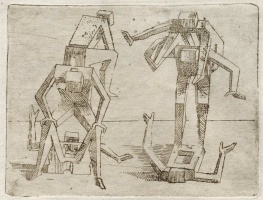
torso, mannerism
The fifty plates of the Bizzarie di Varie Effigy [Oddities of Various Figures] are the liveliest and nearly original etchings of a highly creative, if little known, Florentine creative person, Giovanni Battista d'Antonio Braccelli (active 1616–49). The Bizzarie showroom characteristics of Mannerism, which originated in Italia in the 16th century. (...)
See Sue Welsh Reed (Library of Congress, 2000).
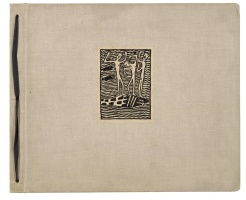
art, dreams, jugendstil, poesy, psychoanalysis, sexuality
In 1907, Fritz Waerndorfer, the financial backer of the Wiener Werkstätte, the leading design workshop in Vienna, deputed Oskar Kokoschka, still a educatee at Vienna's Kunstgewerbeschule (School of decorative arts), to make an illustrated fairy tale for his children. Kokoschka instead delivered a haunting poem about enkindling boyish sexuality assail far-off islands, away from the mod metropolis and conservative life. (...)
Run across Rosa J.H. Berland (Source, 2008).
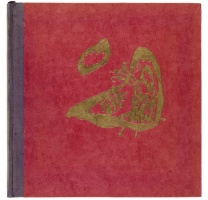
art, avant-garde, poetry, sound
Kandinsky's self-described "musical album," Klänge [Sounds], consists of thirty-eight prose-poems he wrote between 1909 and 1911 and fifty-half dozen woodcuts he began in 1907. In it, he emphasizes the physiological touch of the sonic quality of linguistic communication, oftentimes repeating words until focus on meaning subsides and new focus on aural character of words emerges. These poems were instrumental in Kandinsky'southward development of abstraction. (...)
See Christopher Short (Tate Papers, 2006).

abstract art, avant-garde, poetry
This collaborative book features a poem past Blaise Cendrars almost a journey through Russia on the Trans-Siberian Express in 1905, during the first Russian Revolution, interlaced with an most-abstruse pochoir impress by Sonia Delaunay-Terk. The work is considered a milestone in the development of artist's books equally well equally modernist poetry and abstract art. (...)
Run across Blaise Cendrars (1950), Ekaterina Likhtik (Drunken Boat, n.d.).
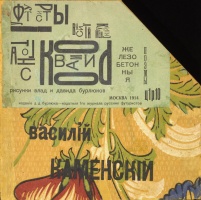
physical poetry, cubo-futurism, futurism, verse, typography, visual poesy
Tango s korovami [Tango With Cows] by the Russian futurist poet Vasily Kamensky, printed in an edition of 300, has go famous primarily for being made entirely of commercially produced wallpaper, with a series of concrete poems – visual poems that employ unusual typographic layouts for expressive effect – printed onto the recto of each folio. (...)

futurism, poetry, visual verse
Francesco Cangiullo's Piedigrotta: Manifesto on the Dynamic and Synoptic Declamation theorizes a kind of robotic and syncopated declamation. The title and cover illustration come from an annual Naples folk tradition, a pyrotechnic feast with extraordinary fireworks. These elements propose the explosive thrust of Mt. Vesuvius, the volcano that stands over the gulf of Naples. (...)
Meet Mladen Ovadija (2013).
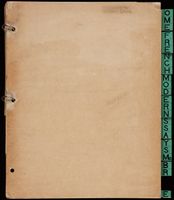
art criticism
In 1922, Henry McBride, who had been close to Duchamp for years, deputed him to design a book for his fine art essays. The resulting pamphlet was equanimous of eighteen cardboard sheets, held together past three rings. Its championship, Some French Moderns says McBride, is spelled out in twenty-seven dissever file tabs attached to the correct edge of each page; when viewed from the verso, these aforementioned tabs spell out the proper noun of the volume's publisher: 'SOCIÉTÉ ANONYME INCORPORATED'. (...)
See David Joselit (Infinite Regress, 1997), Caroline Cros (Marcel Duchamp, 2006).
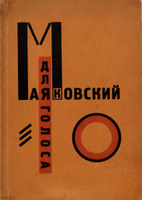
avant-garde, constructivism, graphic blueprint, poetry, typography
Dlia golosa [For the Vox], a collection of 13 poems past Mayakovsky, "synthetic" by Lissitzky, has long been recognized as ane of the finest achievements of Russian avant-garde bookmaking, a tradition in which poets and artists collaborated to create books that attained the status of art objects. Past any reckoning, For the Voice is a landmark consequence in the history of modern graphic blueprint. The volume was inspired by the "new eyes," where ideas are given form through printed letters, turning them into pictorial signs, and past "words that are seen and not heard," equally Lissitzky wrote. (...)
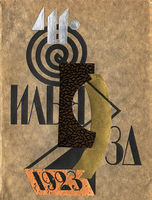
dada, futurism, verse, typography, visual poetry, zaum
Lidantiu faram [Le-Dantyu as a Beacon] is a play typed in zaum language by the Georgian-French artist-typographer Ilya Zdanevich. It remains an unsurpassed example of visually fascinating typographical contrivances and was to exert a decisive influence on the typographical component of international dadaist poesy. (...)
See Lewis Blackwell (20th-century Type, 2004: 35), Alan Bartram (Futurist Typography, 2005: fifty-69).

1910s, 1920s, architecture, art, fine art history, avant-garde, film
This book begins with definitions past well-known artists of the various movements, or forms of art, of the period. They range from Cubism, Futurism, Expressionism, Abstruse Art, through Metaphysicians, Suprematism, Simultanism, Dadaism, Purism, Neoplasticism, Merz, Proun, Perism, Constructivism, to Abstract Film. The section is followed by reproductions illustrating each movement. (...)
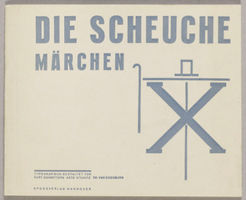
dada, de stijl, graphic design, typography
In Die Scheuche: Märchen [The Scarecrow: A Fairytale] phrasing borrowed from German fairytales, grammar lessons, and religious texts combine into a formal hybrid that is cast in type. For the creators of this children'south volume, such serious play with gear up-made genres and impress components offered a ways of collecting the fragments of the past and assembling them to rebuild for the future. (...)
See Leslie Atzmon (Design Issues, 1996).
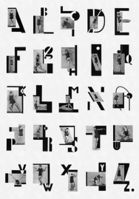
alphabet, advanced, trip the light fantastic, photography, poetry, typography
Abeceda [Alphabet] is a landmark work of the artists' collective Devětsil, active in Prague and Brno in the 1920s. "In Nezval's Abeceda, a cycle of rhymes based on the shapes of messages, I tried to create a 'typofoto' of a purely abstruse and poetic nature, setting into graphic poetry what Nezval gear up into verbal verse in his poetry, both being poems evoking the magic signs of the alphabet." – Karel Teige. (...)
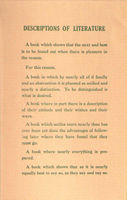
book, literature
One of the rarest of all Stein's publications. (...)
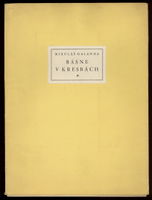
avant-garde
The rare artist's volume Básne v kresbách [Poems in Drawings] by Slovak advanced painter and designer Mikuláš Galanda was published in the year he began teaching at the School of Arts and Crafts in Bratislava. (...)

alphabet, art, sex
The then-called Sovetskaya eroticheskaya azbuka [Soviet Erotic Alphabet] by the monumentalist sculptor Sergei Dmitrievich Merkurov (1881-1952), the author of numerous monuments to Stalin (including the three largest in the USSR) and Lenin.
Run across Ross Wolfe (2013).
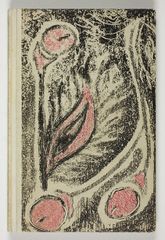
collage, dreams, eroticism, sexuality, surrealism
Jindřich Štyrský (1899–1942) was a painter, poet, lensman, collage artist and editor. A founding member of The Surrealist Grouping of Czechoslovakia he edited Erotická revue that included illustrations past well-known Czech artists and had an imprint called Edice 69 (Edition 69) where Emilie přichází ke mně ve snu [Emilie Comes to Me in a Dream], a portfolio of 10 erotic surrealist photo-collages, appeared in 1933 as its sixth and final volume. Štyrský believed that in pornography he had constitute a destabilizing medium that could exist used to subvert established social and creative norms. Bohuslav Brouk, a psychoanalyst affiliated with the Czech surrealists, contributed an afterword in which he commented forcefully on the subject of pornography as fine art. Despite its small run of 69 copies, the book is now considered a masterpiece of Czech Surrealism. (...)
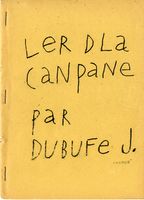
outsider art
An early piece of work of Dubuffet, written phonetically and illustrated with six linocuts and woodcuts. The author presented it every bit "le premier texte publié en langue française vivante depuis les Serments de Strasbourg" [the showtime text published in French as a living language since the Oaths of Strasbourg]. Issued in 150+xv copies. (...)
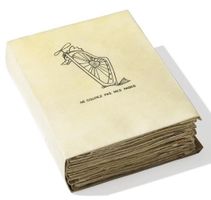
avant-garde, dada, poetry, sound verse, visual poetry
An early anthology of experimental visual and sound verse featuring poems past 21 advanced authors and illustrated with 7 woodcuts, six etchings, two engravings, three drypoints, two aquatints, and half-dozen lithographs. (...)
See Johanna Drucker (Amodern, 2016).

art Peintures was Yves Klein's first public gesture as an artist, featuring pages of "commercially printed papers" that were seemingly reproductions of paintings that, in fact, didn't exist. (...)
Meet Denys Riout (Yves Klein, 2006: 26).
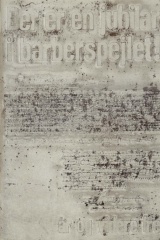
situationists
Fin de Copenhague [Goodbye to Copenhagen] is the first collaboration betwixt Asger Jorn and Guy Debord. The book is credited to Jorn, with Debord listed every bit "Technical Adviser in Détournement". The pages include text in English, French, German language, and Danish; illustrations of whisky bottles beer bottles and cigarettes; aeroplanes and ocean going liners; cartoons of well dressed men and pretty girls and diverse maps of Copenhagen. Each page is covered with a second layer of coloured ink drops and drips, most of which get right to left, emphasising the direction of the volume from outset to finish. (...)
Meet: Christian Nolle (Virose, 2005), Bart Lans (TU Delft, 2008).
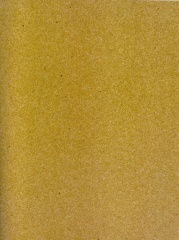
situationists
Mémoires [Memories] is the second of their two collaborative books made by Jorn and Debord whilst they were both members of the Situationist International. The pages consist of phrases, photos, drawings and cartoons that Debord cut out of other works, and and then pasted up in a randomly suggestive mode. Debord then had Jorn taint these 'prefabricated elements' with paint. The colors suggest possible readings of the phrases or but lend a mood to the images. These plates were then spring in sand-newspaper to destroy whatever other books information technology came into contact with–Debord calls them an anti-book. The book was published at Jorn's expense and given away as a sumptuous gift to friends. (...)
Encounter >Christian Nolle (Virose, 2005), Bart Lans (TU Delft, 2008), Ian Thompson (2015), Thomas Hvid Kromann (2016, DA).
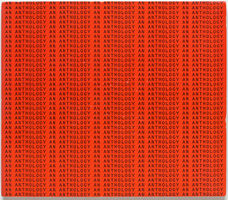
art, avant-garde, conceptual art, fluxus, music, poetry
A source-volume of early Fluxus classics. A collection of texts, scores for events, instruction cards, experimental poesy, and much more than by artists musicians, poets, and dancers, who founded Fluxus, minimalism, conceptual art, and other experimental practices. Includes Henry Flynt'southward kickoff essay on concept art. (...)
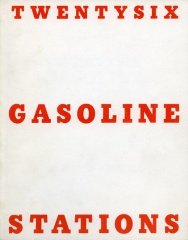
photography
Twentysix Gasoline Stations is the start artist'south book by the American artist Ed Ruscha. Published in Apr 1963 on his own imprint National Excelsior Printing, information technology is often considered to exist the outset mod artist'due south book, and has become famous every bit a forerunner and a major influence on the emerging artist's book civilization, especially in America. The book delivers exactly what its title promises, reproducing 26 photographs of gasoline stations adjacent to captions indicating their brand and location. From the first service station, 'Bob's Service' in Los Angeles where Ruscha lived, the book follows a journey dorsum to Oklahoma Metropolis where he had grown up and where his mother still lived. The last image is of a Fina gasoline station in Groom, Texas, which Ruscha has suggested should be seen as the beginning of the return journey, 'like a coda'. (...)
See Rosalind Krauss (Nether Bluish Cup, 2011: 73-78).
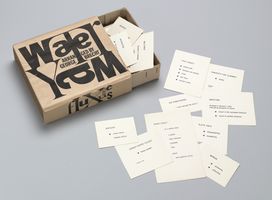
fluxus
Originally published in Germany, June 1963 in a box designed past George Maciunas and typeset by Tomas Schmit, Water Yam has been re-published in diverse countries several times since. Information technology is at present considered one of the about influential artworks released past Fluxus. The box, sometimes referred to every bit a Fluxbox or Fluxkit, contains a large number of minor printed cards, containing instructions known every bit event-scores, or fluxscores. Typically open up-ended, these scores, whether performed in public, private or left to the imagination, get out a lot of infinite for chance and indeterminancy, forcing a large degree of estimation upon the performers and audience. (...)
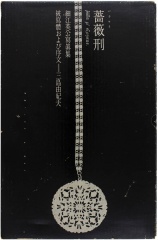
trunk, eroticism, photography
The legendary photobook Barakei — Killed by Roses is a collaboration between photographer Eikoh Hosoe and author Yukio Mishima. Hosoe used props, personal belongings and backgrounds readily available in Mishima's business firm to cast the renowned author every bit his field of study in a sequence of surreal scenery. (...)
See Eikoh Hosoe (ASX, 2010).
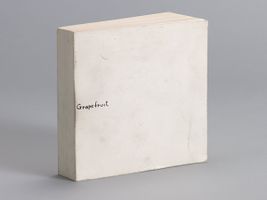
art, conceptual fine art, poetry
Yoko Ono's Grapefruit has get famous as an early case of conceptual art, containing a series of "consequence scores" that supervene upon the concrete work of art – the traditional stock-in-trade of artists – with instructions that an private may, or may not, wish to enact. (...)
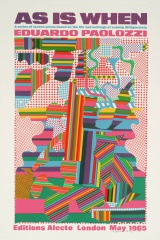
motorcar, pop art
Equally Is When is Eduardo Paolozzi's homage to the philosopher Ludwig Wittgenstein created later on reading his biography written by George Vaughan Wright. Wittgenstein's study of linguistic systems coincided with Paolozzi's beloved of toys and games and influenced his arroyo to the "syntax" and "vocabulary" of picture-making. The work began as a series of collages whose components were fatigued from Paolozzi'southward vast collection of found printed ephemera, which included such various materials as Woolworth wrapping paper and clippings from engineering manuals. Each of them was accompanied by quotations from Wittgenstein'south own writings or passages from the biography book.
See Wendy Weitman (Pop Impressions, 1999).
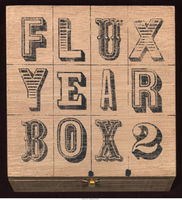
art, fluxus
Flux Twelvemonth Box 2, a signature Fluxus production, is a boxed album of works that was edited and assembled by Fluxus "chairman" George Maciunas offset in about 1965. Like all Fluxus editions, the contents of each box varies depending on what Maciunas had available at the time. (...)
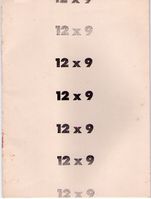
concrete poetry, visual poetry
A procedure-poem [poema processo] past the Brazilian poet, critic and philologist. (...)
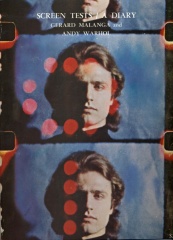
film, photography, poesy
The 54 stills of Screen Tests/A Diary–which moving-picture show actors and poets, socialites and thieves, models, consumers of amphetamine, painters, filmmakers, and musicians–are frame enlargements from curt black-and-white silent-film portraits made between 1964 and 1966 past Andy Warhol with the assistance of Gerard Malanga and/or Billy Linich, likewise known equally Billy Proper noun, who lived at the Factory. Each still consists of 1 or two entire frames from the film footage, and part of either one or 2 boosted frames. (...)
Meet Reva Wolf (Fine art Journal, 1993), Gary Comenas (warholstars.org, 2005).
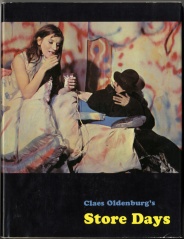
fine art, happening, installation art, performance, performance fine art, sculpture, theatre
In December 1961, Oldenburg opened The Store in the rented storefront at 107 E Second Street that served as his studio, which he called the Ray Gun Manufacturing Company. A fully elaborated manifestation of the projection that he had begun months before, The Store conflated two disparate types of commerce: the sale of cheap trade and the sale of serious art. Oldenburg packed more than one hundred objects into the modestly sized room, setting previously exhibited reliefs aslope new, primarily freestanding sculptures. Everything was bachelor for buy, with prices starting at $21.79 up to $499.99. After The Store closed, on January 31, 1962, Oldenburg used the infinite to stage a series of performances collectively titled Ray Gun Theater. (...)
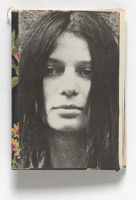
fluxus
Striptease is a small, handmade album. Its intimate scale, and the cover'southward floral textile and closeup portrait of the artist, suggest a diary or keepsake book. Within the volume'due south pages Švecová recorded and reflected on her work, which ranges from pasted photographs and typed descriptions of Aktual grouping activities to a decorated comb and paw-stitched statements conveying her interest in article of clothing design and way ("Be a tailor for yourself"). (...)
Run across Kim Conaty (MoMA Postal service, 2015).
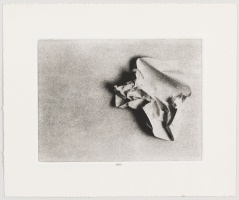
new york graphic workshop
X photoengraved etchings; with an interview by Emmett Williams. (...)
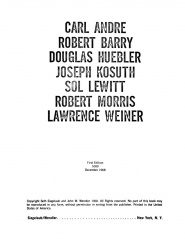
art, conceptual art
Maybe one of the most revered artists' publications of the 1960s, the Xerox Book, published by dealers Siegelaub and Wendler is a xerox book in name only. Conceived past Siegelaub as an cheap artists' publication – each artist was afforded 20-five pages [plus a cover / title folio] to execute a site specific project for the publication. The resulting projects were amidst the most important ever printed past these artists Carl Andre, Robert Barry, Douglas Huebler, Joseph Kosuth, Sol LeWitt, Robert Morris and Lawrence Weiner. When going to press Siegelaub discovered that xeroxes would exist more expensive than traditional start lithography and so the xeroxing was forgone for reasons of expense, all the same, the name of the intended publication lives on. (...)
Meet Zachary Sachs (ContainerList, 2011), Jack Wendler (2012, video).

art, conceptual art
LeWitt's small book of cantankerous-hatched lines is an early example of his career-long involvement in the production of art by systematic means--in this instance, by mathematical permutations. (...)
See Anne Evenhaugen (Smithsonian Libraries, 2013).
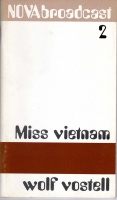
art, fluxus, happening
Contains "Genesis and Iconography of My Happenings", "Miss Vietnam", and "Hommage to Durer". (...)
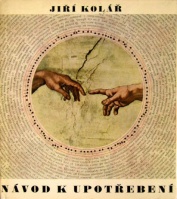
collage, verse
A drove of collages and "destatic" poems from the Czech experimental poet and artist. (...)
See Pavlína Morganová (Sešit, 2013, CZ).
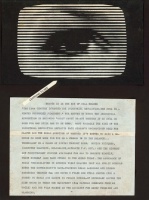
fine art, collage, didactics, machine, mass media, media, participation, performance
Stan VanDerBeek was part of the "Rockefeller Artists-in-Tv set" residency plan at Boston public television station WGBH from 1969–1970, during which time he produced the simulcast goggle box program Violence Sonata. The programme, directed by David Atwood and Fred Barzyk, was transmitted simultaneously on both Channels 2 and 44 on 12 January 1970, with the proffer that viewers place two television sets side-by-side. The series of collages entitled The History of Violence in America was conceived as layouts for reproduction and publication in a booklet to back-trail the circulate. (...)
Come across Melissa Ragain (10-TRA, 2012).
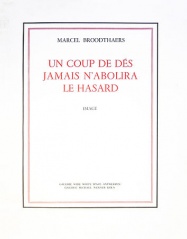
poesy
Un coup de dés jamais n'abolira le hasard [A Throw of the Die will Never Abolish Chance] is a shut re-create of the first edition of the Symbolist poet Stéphane Mallarmé's poem of the same name, published in 1897, but with all the words removed, replaced by black stripes that stand for directly to the typographic layout used by Mallarmé to articulate the text. Oftentimes included in exhibitions tracing the history of the creative person's book, the work is seen equally a seminal example of the European mail service-advanced. (...)

art, art education, educational activity, fluxus, educational activity, operation art
"Off and on 3 years of piece of work and at present VERLAG GEBR. KOENIG, KOELN – NEW YORK publishes the start draft of Instruction AND LEARNING Equally PERFORMING ARTS by ROBERT FILLIOU and the READER if he wishes, with the participation of JOHN Muzzle, BENJAMIN PATTERSON, GEORGE BRECHT, ALLEN KAPROW, MARCELLE, VERA and BJOESSI and KARL ROT, DOROTHY IANNONE, DITER ROT, JOSEPH BEUYS. Information technology is a Multi – book. The space provided for the reader's use is nearly the same equally the author'due south own" (...)
See Hannah Higgins (Fluxus Experience, 2002: 188–189, 195–207).
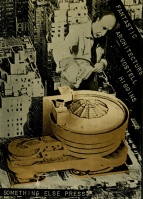
compages, fine art, metropolis, collage, fluxus, manifesto
Published by Dick Higgins' own seminal Something Else Printing, Fantastic Architecture is an adaptation of the German volume Popular Architektur (Droste Verlag, Düsseldorf, 1969) and features artists involved in Fluxus, pop and conceptual art movements addressing the field of compages through collages, captions and mini-manifestos. (...)
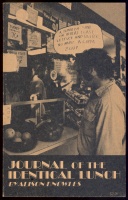
fluxus, food
A journalistic business relationship of a series of performances of a single slice. The volume begins with a description of 'the identical tiffin' which consists primarily of 'a tunafish sandwich on wheat toast with lettuce and butter, no mayo, and a large glass of buttermilk or a loving cup of soup.' These were eaten 'many days of each calendar week at the same place and at about the aforementioned time.' (...)
Meet Johanna Drucker (The Century of Artists' Books, 1995: 345-346).
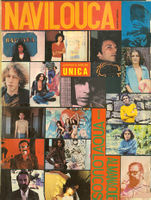
art, brazil, cinema, concrete art, concrete poesy, counterculture, poetry, tropicalia
Navilouca was a Brazilian avant-garde art and poetry magazine, of which only a single issue appeared. (...)
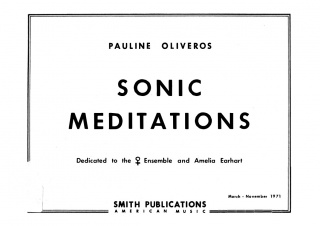
listening, sound
25 meditations for musicians of all ages and skill levels, to help them learn how to focus on, listen to, and produce audio naturally. An important work in the development of Oliveros' Deep Listening. (...)
See Pauline Oliveros (Painted Bride Quarterly, 1976), William Osborne (2000), Kerry O'Brien (New Yorker, 2016), Bradford Bailey (The Hum, 2016), Emma Warren (Bowers & Wilkins, 2017).
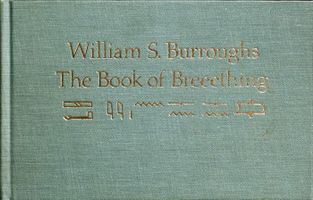
A short essay on Egyptian hieroglyphics, Hassan i Sabbah, The Curse of Rex Tut and land-coups. With illustrations by Robert F. Gale. (...)
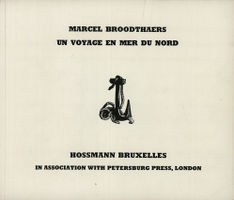
book, image, painting
See Rosalind Krauss (A Voyage on the North Sea, 2000), Cathleen Chaffee (Yale U Fine art Gallery, 2011).
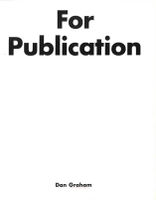
conceptual art, mass media
For Publication reproduces a series of Dan Graham'due south projects carried out between 1965 and 1969 that both drew from and were fabricated to be inserted into the mass media. His Schema deal with quantifying linguistic and stylistic information from mag articles; Detumescence was 1 of many projects that Graham deployed in paid advertizing space of various magazines, every bit was Dan Graham Inc. and Likes: A Computer-Astrological Dating-Placement Service. Income Slice and the proposal for Aspen Magazine are reproduced as is Homes For America, originally published in Arts Magazine from Dec 1966-Jan 1967. In a section on Information, Graham situates his data-organization practices in the context of Ramon Llull, Borges, Marshall McLuhan, Mallarmé and Roy Lichtenstein. (...)
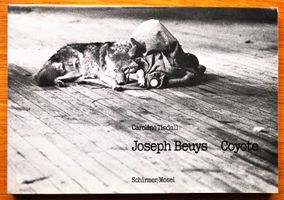
fine art, performance fine art, photography
Coyote was the first effort to capture a performance by Joseph Beuys in book form. Beuys's action, I Like America and America Likes Me, took place in May 1974, when he spent seven days and nights in a room with a wild coyote. The creative person's activities during his confinement with the coyote followed a repeated design. He employed a number of objects: felt, a walking stick, gloves, a flashlight and the Wall Street Journal – l copies were delivered daily. Over the period of a week, human being and beast developed a fashion of wordless co-existence, a two-sided operation that became rich with assumed meanings. Caroline Tisdall, a longstanding friend of the artist, who has written extensively on Beuys and has directed films about him, took nearly of the photographs and wrote the accompanying text. (...)
See January Verwoert (e-flux, 2008).
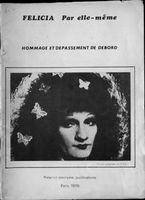
detournement, situationists
Anonymous pamphlet outlining an aesthetic informed by Situationism. (...)
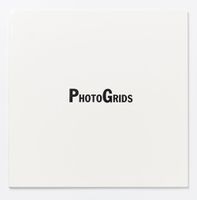
art, conceptual fine art, filigree, minimal art
A book of twoscore 6 plates, each with 9 color photographs taken and arranged in a tic tac toe filigree by the artist with an middle to pattern. Subjects include paneled doors, window panes, gates and fences, cement and mosaic floors, metal bridgework, etc. Three years later LeWitt published Autobiography, which used the same grid format to tell the story of his daily life. (...)

art, fine art criticism, post fine art
Reproduces several texts and works by Johnson, a number of essays by William Due south. Wilson, and photographs of Johnson by Toby Spiselman. (...)
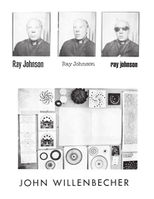
mail art
Reproduces a number of artworks, poems, and postal service art examples by Johnson, an essay on Willenbecher by William Wilson, and several reproductions and prose works past Willenbecher. (...)
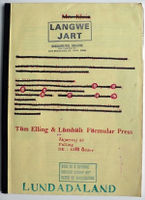
dada, mail fine art
A special rubber postage art result of Dadazine modified by Anna Banana. (...)
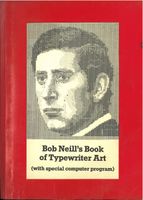
typewriter, typewriter fine art
Bob Neill, artist of the typewriter, was born in the Kent village of Aylesford and practises equally a professional Hypnotherapist in the County Town of Maidstone. He first started typing pictures on his typewriter in 1960, having read virtually a adult female in Spain who was producing this form of typewriter art. His first effort was a portrait of a magazine cover-daughter which was published in the Star evening newspaper. (...)
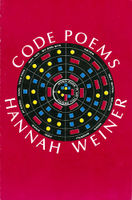
code, communication, poetry
"I am interested in exploring methods of communication that will be understood confront to face or at any altitude, regardless of linguistic communication, country or planet or origin, past all sending and receiving." (...)
Run into Hannah Weiner (1969).
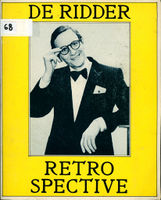
art, fluxus, performance, radio art, theatre
Book with comic strips, conversations and a chronology of Dutch radio art maker, magazine editor and Fluxus member Willem de Ridder, issued to accompany his retrospective at the Groningen Museum in the Summer of 1983.
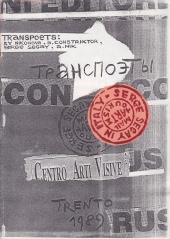
avant-garde, collage, poetry, transfurism, zaum
A piece of work of transfurist art and poetry. (...)
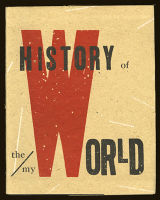
feminism, history, memory
A striking alternative to the familiar telling of historical events, Drucker's business relationship of mythic and major events in the class of western culture marches fell over received traditions. The combination of typographic innovation, visual puns and linguistic play are unique elements of her manner. A richly suggestive work interweaving official history and private memory. (...)
See Johanna Drucker & Tate Shaw (Periodical of Artists' Books, 2007).
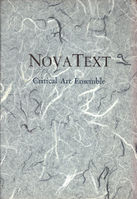
criticism, poetry, text
The texts "The Critical Role", "Unknown Fact Number I", "Always Already", "The Funest Experiment", "Like A Large Dog", and "This Will Be the Decease of Chit-Chat" are letterpressed onto thin, white handmade papers. These elevator, like veils, to reveal the "hidden texts" and "annotations" to each piece printed on a sturdier dark-green paper. (...)
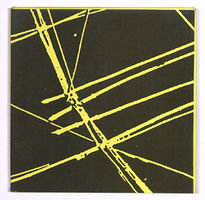
concrete poetry
A book composed of colour plates offset created in the early on 1970s by the Brazilian poet and graphic artist Wlademir Dias-Pino. Published as ane of the 1,001 volumes of Enciclopédia Visual [Visual Encyclopedia] series. (...)
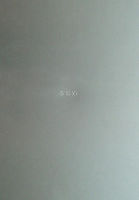
body, nudity, photography, popular culture, sexual activity, sexuality
One of the most controversial books of the 1990s, at present long out of print. (...)
See Isabella Rossellini (Huffington Post, 2014).
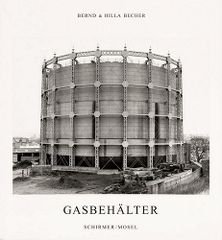
architecture, art, conceptual art, gas, industrial architecture, photography
Typological, repetitive, at times oddly humorous, Bernd and Hilla Becher'south photographs of industrial structures are, in their cumulative effect, profoundly moving. In this work, the Bechers' present 4 principally different forms of gas holders or gas tanks in 140 photographs taken during the years 1963-1992 in Smashing Britain, French republic, Belgium, Germany, and the United States. The subjects are photographed under overcast skies that eliminate expressive variations in lighting; the Bechers brand no attempt to analyze or explain them. Captions contain only the barest of data: time and place. On the subject of gas holders, the Bechers limit their remarks to a minimal functional clarification, leaving the artful dimension of their discipline to the photographs themselves: much of the fascination of these photographs lies in the fact that these unadorned metal structures, presumably built with little business for their visual impact, are almost invariably striking in appearance. (...)
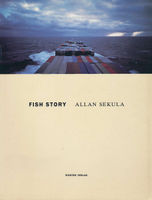
capitalism, photography
The Fish Story projection focuses on the quest for centers of maritime power past and nowadays and the political interest in the change in the economic infrastructure of industrial ports yielded by late-backer rule in its phase of multinational and global expansion. This is the third projection of the American photographer and historian Allan Sekula in his cycle on the imaginary and existent geography of the advanced capitalist world. (...)
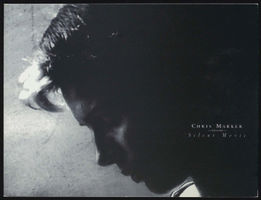
movie theater, film, film history, silent cinema, silent moving-picture show
In Silent Moving-picture show, Marker employs 5-channels of video, each a thematic exploration of early movie theater. Picture show images disclosing 'The Journey,' 'The Face,' 'The Gesture,' and 'The Flit' occupy four of the monitors while on the fifth (and middle) monitor is a collection of ninety-four silent-era intertitles, 'telling short, mysterious pieces of unknown stories.' These moving images travel through a calculator interface that assembles an e'er-changing array of sequences. At any given moment, each passage is in unique juxtaposition with the other images passing across the surrounding monitors. Coloration, tone, and association are governed by run a risk contiguities; fifty-fifty the intertitles narrate across a field of fluid relationships. (...)
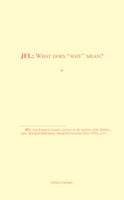
philosophy of art
Hilarious and profound. This book has so many layers of meaning that you can read it every day for the residue of your life. In 2001, while residing at Akademie Schloss Confinement in Stuttgart, artist and curator Octavian Esanu read hundreds of interviews and essays by artists and art critics. He then formed a new text out of questions near art, that he culled from his readings. Each question is duly footnoted. (...)
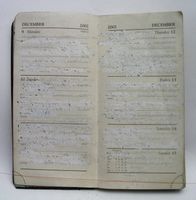
Heath Bunting rarely puts his thoughts and feelings on screen with words. Usually, they were blazoned across networks in passionate expressive structures which he draws from the ever encroaching apparatus repressive. His artist's diary for 2003 provides provocative insight into his character and the evolution of his work. (...)
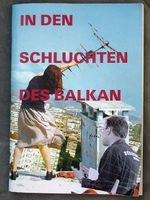
appropriation, art, balkans, contemporary art
"This is my artist's book based on the altered and heavily manipulated catalogue of the exhibition of gimmicky art from the Balkans titled In the Gorges of the Balkans, 2003, in Kunsthalle Fridericianum in Kassel, Deutschland. The book is part of my piece of work-in-progress titled Schadenfreude Guided Tours (2003), which originated in and with this show. The work is the visual-textual summary of the tours." (...)
Meet Luchezar Boyadjiev (Manifesta Journal, 2003).
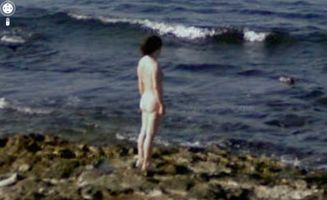
art, google, photography, surveillance
Jon Rafman has spent a considerable amount of fourth dimension capturing and compiling Google Street View images that fulfill an artistic quality rather than purely informative. (...)
Encounter Jon Rafman (ArtFagCity, 2009), Jon Rafman (2010).
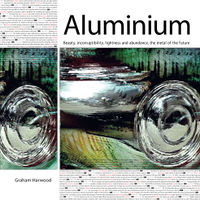
history of engineering, industry, technology, video
Aluminium is a futurist graphic book and film about the social history of aluminium. In 2009 it will be 100 years since Marinetti gear up out the Futurist manifesto in which advocated the consumption of metal bolts and engine oil to turn men into machines. Marinetti believed in speed, machines and violence, values that for him were epitomised in the contempo invention of aluminium. Drawing on archival footage from the aluminium industry, Harwood derives algorithms from the Futurist Manifestos to create the books cells by recording only the differences between key video frames. Caption texts are gathered up and edited together past consequence crawlers as they search across the Internet. Aluminium takes the futurist logic of the 20th Century and turns information technology back upon its self.
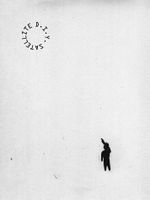
diy, hardware, open up source, software, space
A zine by Song hojun, the leader of Open Source Satellite Initiative for developing a D.I.Y. satellite. Based on the creative person's sketch and transmission of D.I.Y. Satellite, the publication contains thoughts on private infinite program, its execution plan, and things are going to happen afterwards. (...)
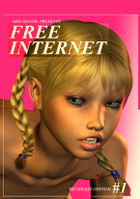
art
A project initiated by Marlie Mul and Yngve Holen. (...)
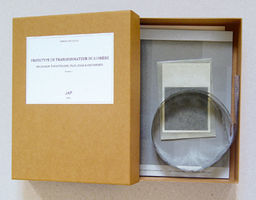
colour, design, lite, mathematics
Le présent travail est le fruit d'une recherche qui s'étendit sur plus d'un an, et que cette première publication n'épuise pas. [..] J'ai voulu offrir à son lecteur ou à sa lectrice une véritable expérience de lecture – au sens peut-être le plus conservateur du terme – doublée d'une expérience visuelle et tactile de première main. Je prétends ainsi leur communiquer une synthèse d'observations et de pensées privées, personnelles. Cet essai pourra par conséquent contenir des erreurs ou des naïvetés qui chiliad'auront échappées. Avant tout, j'espère y avoir trouvé un betoken d'équilibre entre contenus vusuels, textuels et stylistiques. (...)
Come across Haseeb Ahmed and Adrien Lucca (2011), Adrien Lucca (2012).
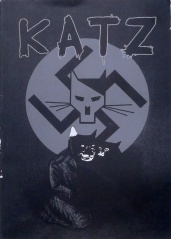
cribbing, comics, conceptual comics
Katz is a pirated edition of Art Spiegelman'south seminal graphic novel Maus. Katz is an exact copy of the French edition of Maus, with the difference that all the animal characters, have been redrawn every bit cats.
Come across Chiliad. Hulot and Ilan Manouach (Ough, 2012), Xavier Guilbert and Ilan Manouach (du9, 2012, FR), Neb Kartalopoulos (World Literature Today, 2016).
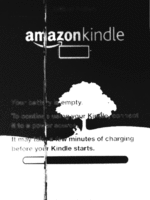
book, e-book, glitch
56 Broken Kindle Screens is a impress on demand paperback that consists of found photos depicting broken Kindle screens. The Kindle is Amazon's e-reading device which is past default connected to the company's book store. The book takes as its starting point the peculiar aesthetic of cleaved E Ink displays and serves as an exam into the reading device's materiality. As the screens break, they become collages composed of different pages, cover illustrations and interface elements. (...)
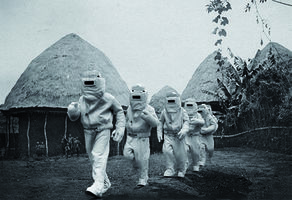
africa, documentary, photography, infinite race, zambia
In 1964, still living the dream of their recently gained independence, Zambia started a space plan that would put the first African on the moon catching upwards the USA and the Soviet Union in the infinite race. Only a few optimists supported the project by Edward Makuka, the schoolhouse teacher in charge of presenting the aggressive program and getting its necessary funding. But the financial aid never came, equally the United Nations declined their support, and 1 of the astronauts, a 16 yr onetime girl, got pregnant and had to quit. That is how the heroic initiative turned into an exotic episode of the African history, surrounded by wars, violence, droughts and hunger. (...)
See Aline Smithson (Lenscratch, 2012).
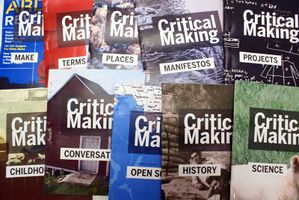
3d printing, art, contemporary art, critical making, blueprint, diy, diy biology, engineering
Critical Making is a handmade book project by Garnet Hertz that explores how hands-on productive work ‐ making ‐ tin can supplement and extend critical reflection on technology and society. It works to blend and extend the fields of pattern, gimmicky art, DIY/craft and technological evolution. It besides tin can be thought of as an appeal to the electronic DIY maker movement to be critically engaged with culture, history and society: after learning to use a 3D printer, making an LED glimmer or using an Arduino, and then what?
See Regine Debatty (Nosotros Brand Money Non Art, 2013), Blue (Engine Institute, 2013).

1960s, lite, media applied science, photography, vietnam war, war
A book well-nigh the Sylvania flashcube — the space-aged, wink photography device, revolutionary in 1965 and nearly obsolete by 1975. Assembled from a wide range of archival materials — a "terrorist letter," G.I. photographs from Vietnam, Sylvania flashcube advertisements, as well every bit Long's photographs and photomontages—the book explores the links betwixt light, war, history and photography. (...)
See Anna McCarthy (Social Text, 2012).
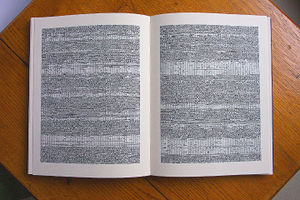
annal, archiving, art, code, data, digital heritage, media art, preservation
The SKOR Codex is a printed book which will be sent to different locations on earth. It contains binary encoded prototype and sound files selected to portray the multifariousness of life and culture at the Foundation for Art and Public Domain (SKOR), Amsterdam, and is intended for any intelligent terrestrial life form, or for future humans, who may observe it. The files are protected from bitrot, software decay and hardware failure via a transformation from magnetic transitions on a disk to ink on newspaper, safe for centuries. Instructions in a symbolic language explicate the origin of the book and point how the content is to be decoded. (...)
Encounter Annet Dekker and La Société Anonyme (Open!, 2014).
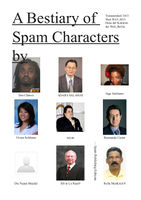
spam
Booklet resulting from the workshop "Spam Publishing" held at Transmediale 2013, Berlin. (...)
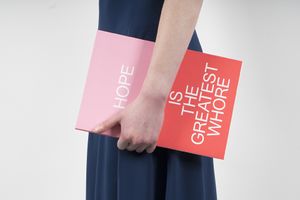
art, manifesto
An 80 point manifesto on polite art. Like every intimate dinner party, Bon Ton Mais Non requires one symphony orchestra, a pastry chef, a large mirror, and the fact of cannibal sirens. (...)
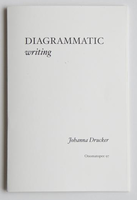
book, diagram, gestalt theory, graphic blueprint, text, writing
Diagrammatic Writing is a poetic sit-in of the capacity of format to produce meaning. The joint of the codex, as a infinite of semantically generative relations, has rarely (if always) been subject to and so highly focused and detailed a written report. The text and graphical presentation are fully integrated, co-dependent, and mutually self-reflexive. (...)
Johanna Drucker (Iowa Review, 2014).
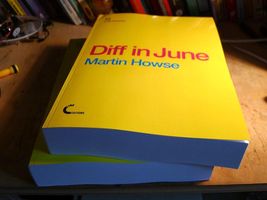
annal, data, language
Diff in June tells a day in the life of a personal computer, written by itself in its own linguistic communication, as a sort of private log or intimate diary focused on every single change to the data on its hard disk. Using a small custom script, for the entire month of June 2011 Martin Howse registered each chunk of data which had changed within the file system from the previous day's paradigm. Excluding binary data, one day's sedimentation has been published in this book, a novel of data archaeology in progress tracking the overt and the covert, merging the legal and illegal, personal and administrative, source code and frozen systematics. (...)
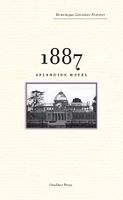
1880s
In Splendide Hotel – 1887 at that place is one sole room and it is transparent, containing apparitions of all literary, musical, scientific and abstract sorts. From an internal monologue to quantum physics to the gramophone and bioluminescence, inside this piddling book there is a drove of virtually all the references serving to rebuild this hotel inside the Cristal Palace to reveal 1887 as the nativity year of our universe. (...)
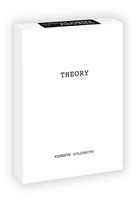
language, literature, poetics, verse, theory, writing
Theory offers an unprecedented reading of the contemporary world: 500 texts – from poems and musings to brusque stories – printed on 500 pages assembled in the class of a ream of newspaper. Curated by the writer-poet, this collection maps out the various issues and trends in contemporary literature in a world currently being shaken up by everything online and digital, and calls for the reinvention of creative forms. (...)
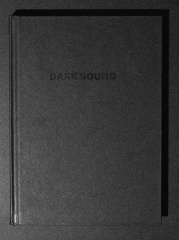
republic of ecuador, environment, field recording, oil
The volume contains "Ecopolitik"–an introduction equally an epilogue by José Luis Espejo, a letter to the Huaorani people, 2 enquiry texts and one bertso, descriptive texts and photos of recordings, a possible chronology, a glossary, a compilation of several texts with testimonies, reports and declarations from different people, groups, institutions, and publications in reference to the impact—direct or indirect—of the racket from the oil industry during its various phases of evolution on the people, the environment and the animal. (...)
See reviews.
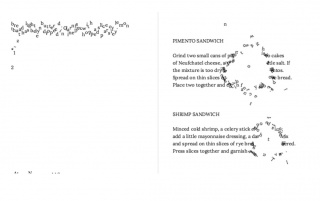
book
A Physical Book makes a digitized volume 'physical' by rendering it in a simulated space where properties like gravity, friction, and velocity all use. The programme randomly perturbs the letters, then takes a snapshot at a point in time, re-assembling the images into a new, 'un-digitized' book. The raw, uncorrected scanned text of The Up-To-Date Sandwich Volume: 400 Ways to Make a Sandwich (1909) is re-imagined as this 251 page book. (...)
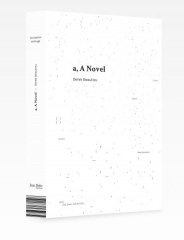
conceptual writing, uncreative writing, visual poetry
a, A Novel is an erasure-based translative response to Andy Warhol's eponymous novel. Beaulieu carefully erases all of the text on each page of the original piece of work, leaving merely the punctuation marks, typists' insertions and onomatopoeic words. The resultant text is a novelistic ballet mécanique, a visual orchestration of the traffic signals and street noise of 1960's New York City. This visually powerful half score/half novel highlights the musicality of non-narrative sounds embedded within conversation. (...)
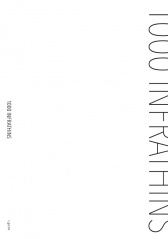
aesthetics, infrathin
Infranthin is the space betwixt spaces, the sound between sounds, the sensation between sensations; neither here nor there, this nor that, but both—all at the aforementioned time. The closest metaphor is the fourth dimension, which is best illustrated by a cube collapsing in on itself and at the same time expanding. I know. It'due south non very helpful. But that's the whole point—information technology'due south a moving target, a ball of contradictions; just when you think yous've got information technology, it's escaped you. Marcel Duchamp gave six instances of the infrathin. We wrote chiliad of them. (...)
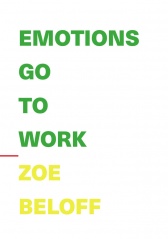
commercialism, emotion, engineering science
Emotions Go to Work is an investigation into how engineering science is used to turn our feelings into valuable avails. One might call information technology the transformation of emotion into capital. Information technology asks what is at stake in our human relationship with the companions we call smart objects? What does the future hold in store for a globe where people are treated more and more like things, while the billions of gadgets that make upwardly the Internet of Things are increasingly anthropomorphized, granted agency? (...)
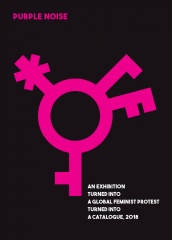
cyberfeminism, feminism, racket, social media, engineering science
In the summer of 2018, a German creative person, famous for having a past every bit cyberfeminist and a present as technofeminist, was invited to Stuttgart in the Southward of Deutschland, to create an exhibition dealing with issues of gender and engineering science as function of a large festival. During her research, she got in affect with numerous swain artists and activists, and in a process of commonage realization, they found that the time has come, not for some other exhibition, only for a global technofeminist upheaval. (...)
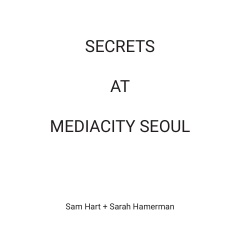
encryption, data, secrecy
Secrets at Mediacity Seoul traces a genealogy of artworks that examine the secret as an information structure, from the conceptual artworks of the 1960s to works that consider secrecy and encryption in today'south social and technological context. (...)
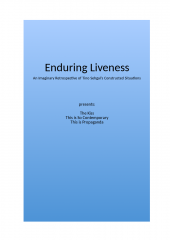
art documentation, performance, performance art
The primal functions of a museum are the collection, presentation, preservation and education of cultural and artworks for the enjoyment of, and to brainwash, the public. Functioning art has been notoriously hard for museums to handle, despite the 'easy' presentation the non-materiality of the art form challenges the conventional methods and practices of a museum. Artist Tino Sehgal had added to these problems, persisting in having no documentation of his performances, or better his 'constructed situations', in whatever grade or way. This catalogue presents three perspectives that open upwardly the potential of documentation equally a method to generate new articulations and ways of understanding, thinking and performing. (...)
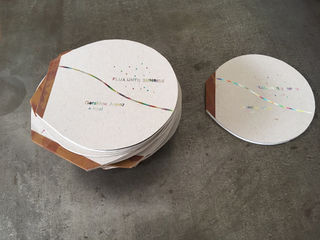
ceramics, brandish, electronic waste, screen
The book combines an interview with Esther Leslie about Materialismo Mágico with documentation of my material exploration of what she refers as the Liquid Crystal Epoque. The book includes the recipes for LCD and Gorilla screen-glazes. (...)
Source: https://monoskop.org/Artists_publishing